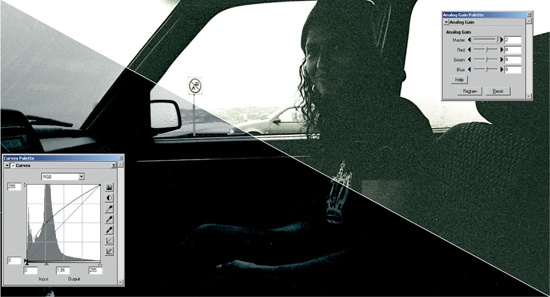Analog Gain of Nikon Scan (Lamp Brightness in SilverFast) is usually taken care of automatically by the scanning program as part of exposure control. It is a matter of exposure time and not the brightness of the light source, as the name would seem to indicate. For film with normal exposure, this function is not really necessary and the exposure may be left at its default setting. For underexposed or overexposed pictures, manipulating Analog Gain produces better image results.
Analog Gain directly controls the scanner hardware. It governs exposure time, i.e., how long the scanner lamp shines through the film. The same effect cannot be produced later in image processing; more light must be physically projected through the film.
Nikon Scan simulates the effect in the preview window to give a point of reference. However, only performing the proper scan would show the exact result of adjusting exposure. Increasing Analog Gain makes sense only if the monitor is calibrated. Often, a scanned image looks too dark simply because the monitor is not adjusted properly. If one tries to compensate for poor monitor adjustment with Analog Gain, the scanned files will not be usable on a calibrated monitor.
The effects of Analog Gain are fixed in the image file. Since Analog Gain represents change at the hardware level, a poor setting cannot be fixed later in Photoshop. A negative side effect of using Analog Gain is an increase in image noise. The simplest way to work with Analog Gain is with the Master slider (all three color channels together). In most cases this works fine. It is also possible to tune each color channel separately. However, finding the ideal settings for tuning can be tedious.
For overexposed images, reduce Analog Gain to lessen the exposure time. This may salvage image portions that would be blown out by the scanner light on the standard setting. Analog Gain does not work miracles; it merely helps to recover some detail in poorly exposed images. The results of using Analog Gain will never match a properly exposed shot. Best practice is always to ensure correct exposure at the moment you take the picture. If that is not possible, Analog Gain is at least a handy makeshift to rescue some details.
Multi Exposure produces an effect that is similar to Analog Gain, but in contrast it expands the dynamic range of the scanner on the whole, (which is the better technology). My advice would be: if your scan program supports Multi Exposure try it out first. If it does not have the desired effect, then try Analog Gain as a last alternative.


